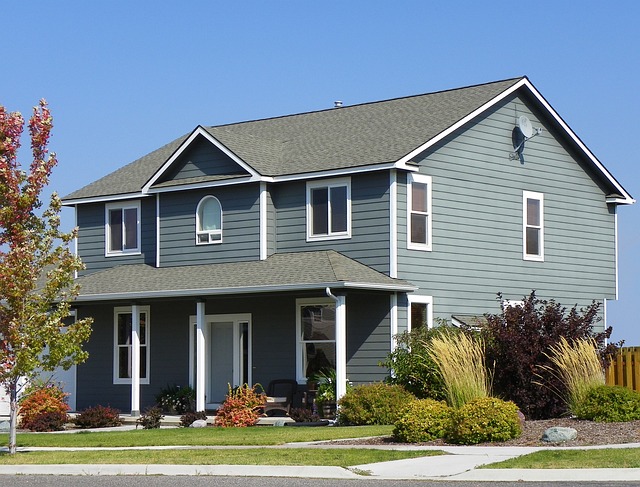2023 has seen Executive Condos (ECs) in Singapore continue their upward trend in pricing, reflecting a consistent appreciation over recent years. These middle-income housing options blend public and private living features, appealing to both first-time homeowners and those looking to upgrade from HDB flats. The price growth of ECs is influenced by Singapore's economic expansion, demographic shifts, and strategic government interventions aimed at market stability. Factors such as interest rates, inflation, and housing grants play a role in determining the initial affordability and future resale value of ECs. Their desirability due to their location, age, and proximity to amenities further drives demand. The Singaporean government's policies, including priority schemes for upgraders and adjustments to loan-to-value ratios, are crucial in influencing the supply and affordability of ECs. Investors and buyers should consider historical appreciation trends and market cycles when assessing ECs as a potentially reliable investment, given their consistent long-term growth trajectory, often outpacing inflation rates. It's essential to analyze past performance alongside current economic indicators and demographic shifts for informed decision-making in the Executive Condo market.
Executive Condos (ECs) in Singapore have long been a significant component of the nation’s housing landscape, offering an avenue for first-time homeowners to secure suburban living spaces with a myriad of amenities. This article delves into the historical price trends of ECs, examining the factors that have shaped their appreciation over time, and the role of government policies in influencing pricing and supply. By analyzing specific EC developments over the decades and leveraging historical data, we aim to shed light on past performance and predict future trends for discerning investors. Join us as we explore the intricate journey of EC price appreciation within Singapore’s dynamic property market.
- Understanding Executive Condos (ECs): An Overview of Their Role in Singapore's Housing Market
- Historical Price Trends of Executive Condos in Singapore
- Factors Influencing EC Price Appreciation Over the Years
- The Impact of Government Policies on EC Pricing and Supply
- Analyzing the Performance of Specific EC Developments Through Decades
- Predicting Future Trends: What Historical Data Suggests for EC Investors
Understanding Executive Condos (ECs): An Overview of Their Role in Singapore's Housing Market

In the dynamic housing landscape of Singapore, Executive Condos (ECs) occupy a unique niche that caters to the middle-income group. These residential offerings are a hybrid of public and private housing, designed to provide an alternative for upgrading beyond Housing and Development Board (HDB) flats without the stringent income restrictions imposed on other types of subsidized housing. ECs offer a blend of affordability and luxury, with facilities that rival those of premium condominiums. Over time, these properties have demonstrated a capacity for price appreciation, making them an attractive investment for many Singaporeans looking to build equity in a property. The role of ECs in the broader housing market is significant, as they help manage the transition from public to private housing by offering a middle ground that is both accessible and aspirational.
The structure of ECs allows eligible applicants to enjoy a 99-year lease or take up the option to purchase the unit during its fifth year for a price reflection. This feature, coupled with their strategic locations and the growing demand for suburban living, has contributed to the steady appreciation in EC prices over the years. The pricing trends of ECs are influenced by various factors including market demand, economic conditions, and government policies. As such, they serve as a barometer for the health of Singapore’s property market, reflecting both short-term fluctuations and long-term growth patterns. Prospective homeowners and investors alike monitor these trends closely, as ECs represent a strategic investment opportunity in one of Asia’s most vibrant economies.
Historical Price Trends of Executive Condos in Singapore

In recent years, the Executive Condominium (EC) market in Singapore has demonstrated a notable trajectory in terms of price appreciation. Historical data indicates that EC prices have generally risen over time, reflecting their status as a popular housing option among both first-time homeowners and upgraders. This trend is influenced by various factors including economic growth, population dynamics, and government policies aimed at stabilizing the property market. Notably, ECs offer a unique proposition with features of both public and private housing, which has made them increasingly attractive to a wide range of buyers. The pricing trends of these properties show a pattern of growth, with periods of sustained increase punctuated by brief stabilization phases. For instance, EC prices saw a significant uptick in the years following their introduction, with subsequent cycles of appreciation occurring at different paces depending on macroeconomic conditions and housing market demand-supply dynamics. As such, potential investors and homeowners interested in the EC segment should monitor these trends closely, as historical patterns can provide valuable insights into future price movements.
Factors Influencing EC Price Appreciation Over the Years

Executive Condos (ECs) in Singapore have experienced varying degrees of price appreciation over the years, influenced by a myriad of economic, social, and policy factors. The initial price of an EC upon its launch is often a reflection of market conditions at that time, including interest rates, inflation, and overall economic health. As these condos are a hybrid of public and private housing, they are subject to the rules set by the Singapore government, which include a five-year minimum occupation period before units can be sold on the open market. This unique status has implications for both initial affordability and subsequent resale value.
Over time, the appreciation of EC prices is also contingent upon their location, age, and the developmental changes within the vicinity. Proximity to amenities, transportation nodes, and evolving infrastructure can significantly influence property desirability and valuation. Additionally, demographic shifts, such as the growing population of young families, contribute to the demand for larger living spaces that ECs typically offer. Furthermore, government policies, including housing grants for eligible applicants, can affect affordability and attractiveness, thereby influencing price trends. Market sentiment and investor confidence also play a pivotal role; in times of economic stability or growth, investor interest often drives up prices, while during economic downturns, price appreciation may slow or even reverse. Understanding these interdependent factors is crucial for anyone looking to buy or sell an Executive Condo, as it provides insight into the potential long-term value and market positioning of these properties.
The Impact of Government Policies on EC Pricing and Supply

The influence of government policies on Executive Condo (EC) pricing and supply in Singapore has been a subject of considerable interest among property market observers. These policies are designed to balance the needs of various segments of the population, from first-time homeowners to upgraders. Over the years, the Housing and Development Board (HDB) has introduced several measures, such as the priority scheme for upgraders and varying loan-to-value ratios, which have a direct impact on the affordability and attractiveness of ECs. The introduction of cooling measures, including Additional Buyer’s Stamp Duty (ABSD) and Total Debt Servicing Ratio (TDSR), has also played a role in shaping the demand and pricing for these properties. These policies aim to ensure a stable and sustainable property market by preventing speculative behavior and ensuring that ECs remain within the reach of eligible Singaporeans.
Moreover, the supply of Executive Condos is closely monitored and managed by the government. The land sales program, which allocates state lands for development into ECs, is a critical component in determining the availability of these units. The frequency and scale of these sales are carefully calibrated to respond to market demands and demographic trends, as well as to prevent overbuilding. The strategic release of EC sites aligns with broader economic and housing policies, influencing not only the supply but also the pricing of these properties. As a result, the government’s approach to EC supply and pricing is a dynamic interplay between policy, market forces, and societal needs, with the ultimate aim of providing quality, affordable living options for eligible Singaporeans.
Analyzing the Performance of Specific EC Developments Through Decades

Over the past several decades, the performance of Executive Condominiums (ECs) in Singapore has been a subject of considerable interest among investors and homeowners alike. These housing developments, designed to offer a stepping stone from public to private housing, have seen a marked evolution in terms of design, amenities, and location preferences. Early EC projects, such as those developed in the 1980s and 1990s, often featured more modest facilities compared to the high-end, integrated developments that are the norm today. Fast forward to the present, and it’s clear that ECs have become increasingly sought after, reflecting a maturing property market. The appreciation of these properties has been influenced by factors such as population growth, economic development, and government policies, which have led to a steady rise in prices over time.
In analyzing the performance of specific EC developments through the decades, one can observe a trend of consistent value growth associated with these properties. For instance, projects situated near mature estates or within regions undergoing rapid transformation have shown significant price appreciation. Additionally, the introduction of new initiatives like the En bloc sales and the increase in Supply Curve Flattening (SCF) measures have impacted the pricing dynamics of ECs. Investors looking to capitalize on long-term growth have been drawn to these developments, recognizing their potential as both a stable investment and a comfortable family home. The longevity of ECs as a property class in Singapore underscores their resilience and adaptability in the face of changing market conditions.
Predicting Future Trends: What Historical Data Suggests for EC Investors

Historical data provides valuable insights into the pricing trends of Executive Condos (ECs) over time, which can be instrumental for investors looking to predict future market movements. By analyzing past sale prices, one can discern patterns and factors influencing EC prices, such as economic conditions, population growth, and policy changes by the government. For instance, EC prices have historically shown a tendency to appreciate over the long term, often outpacing inflation. This appreciation is influenced by the limited supply of these units, coupled with a consistent demand from both first-time homeowners and upgraders. Investors should take note of these trends, as they suggest that ECs can be a stable investment, particularly in markets where such data indicates a history of steady growth. It’s also worth considering the cyclical nature of real estate markets; while past performance is not a guarantee of future results, understanding how EC prices have reacted to market shifts in the past can help investors make more informed decisions about their investments. Key factors such as interest rate changes, population demographics, and government subsidies for EC purchases all play roles in shaping the market’s trajectory and should be analyzed alongside historical data.
Over the years, Executive Condos (ECs) have played a pivotal role in Singapore’s housing landscape, offering an affordable and quality living option for eligible couples. This comprehensive analysis has traced the historical price trends of ECs, pinpointing key factors that have influenced their appreciation over time. The influence of government policies on EC pricing and supply has been particularly marked, with measures designed to stabilize the market and ensure a balanced supply of public housing. By examining the performance of specific EC developments over the decades, it becomes evident that these properties have consistently offered tangible investment potential. With this historical context in mind, investors can now make informed decisions when considering ECs as part of their portfolio. The patterns gleaned from past trends suggest a continued robustness for ECs, affirming their position as a viable housing and investment option within Singapore’s dynamic property market.



